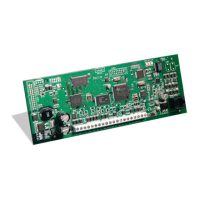27
Glossary
Console
A PC application program which can connect to the receiver and provide Diagnostic and program-
ming abilities to the user.
DHCP
Dynamic Host Configuration Protocol, a protocol for assigning dynamic IP addresses. With
dynamic addressing, a device can have a different IP address every time it connects to the network.
In some systems, the device’s IP address can even change while it is still connected. DHCP also sup-
ports a mix of static and dynamic IP addresses.
Dynamic addressing simplifies network administration because the server keeps track of IP
addresses rather than requiring an administrator to manage the task. This means that a new computer
can be added to a network without the hassle of manually assigning it a unique IP address.
DVACS®
Digital Voice Access Control System This monitoring method requires a dedicated leased line from
Bell Canada connected between the alarm system and the monitoring station. It is supervised so
that if the line is cut an alarm will occur. This system is only available in Canada and meets ULC
certification requirements. DVACS is a registered trademark of Electro Arts Ltd. Scarborough
Ontario Canada
Encryption
The translation of data into a secret code usually based on a key. Encryption is the most effective way
to achieve data security. To read an encrypted file, you must have access to a secret key or password
that enables you to decrypt.
Ethernet
A local-area network (LAN) protocol developed by Xerox Corporation in cooperation with DEC and
Intel in 1976. Ethernet uses a bus or star topology and supports data transfer rates of 10 Mbps. A newer
version of Ethernet, called 100BaseT (or Fast Ethernet), supports data transfer rates of 100 Mbps. The
newest version, Gigabit Ethernet, supports data rates of 1 Gigabit (1,000 Megabits) per second.
IEEE
Abbreviation of Institute of Electrical and Electronics Engineers, pronounced I-triple-E. Founded
in 1963, the IEEE is an organization composed of engineers, scientists, and students. The IEEE is
best known for developing standards for the computer and electronics industry.
Intranet
A network based on TCP/IP protocols belonging to an organization, usually a corporation, accessible
only by the organization's members, employees, or others with authorization.
IP
Abbreviation of Internet Protocol, pronounced as two separate letters. IP specifies the format of
packets, and the addressing scheme. Most networks combine IP with a higher-level protocol called
Transport Control Protocol (TCP), which establishes a virtual connection between a destination and
a source.IP by itself is something like the postal system. It allows you to address a package and drop
it in the system, but there's no direct link between you and the recipient. TCP/IP, on the other hand,
establishes a connection between two devices so that they can send messages back and forth for a
period of time.
IP Address
An identifier for a computer or device on a TCP/IP network. Networks using the TCP/IP protocol
route messages based on the IP address of the destination. The format of an IP address is a 32-bit
numeric address written as four numbers separated by periods. Each number can be zero to 255.
LAN
A computer network that spans a relatively small area. Most LANs are confined to a single building
or group of buildings. However, one LAN can be connected to other LANs over any distance via
telephone lines and radio waves. A system of LANs connected in this way is called a wide area net-
work (WAN).
MAC
Short for Media Access Control address, a hardware address that uniquely identifies each device of a
network. The address is not programmable by the user and the manufacturer of the device must reg-
ister with IEEE before receiving an assigned group of addresses.

